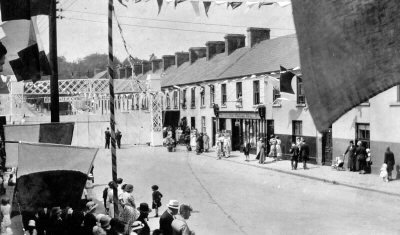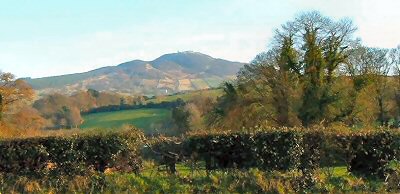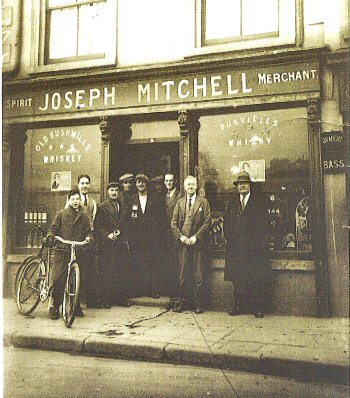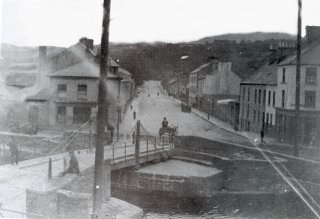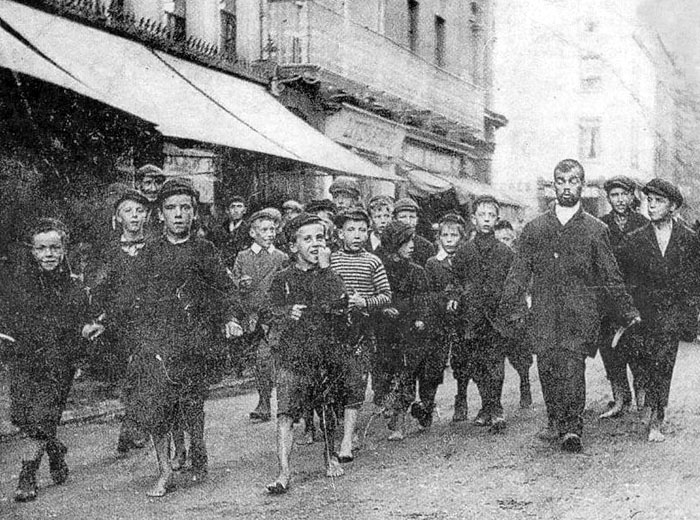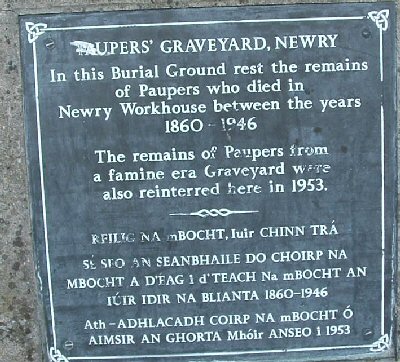Although clearly built for military fortification, Narrow Water Castle (the Keep on the Loughside, as distinct from the residence of Major Hall on the demesne behind the trees) is a fairly typical example of the Tower Houses erected throughout Ireland from the 15th to the 17th centuries.
Prior to that time the Normans or English when they invaded Ireland required much stronger and better defended castles such as those at Carlingford and Greencastle. In this regard, it is notable that there exists the remains of an earlier castle mound a little further along the road to Warrenpoint, where King John, in Ireland to establish his sovereignty over his upstart Earls like De Courcy and De Lacey, is believed to have crossed these waters by pontoon bridge. This mound may have had an earlier (12th century) fortification built on it, and been used as a base in the conquest of the east side of the Lough.(see below).
By the 18th century the conquest was complete and strongly defended residences, with castellation and other fortifications and a permanent garrison, were no longer necessary. Tower Houses were essentially a tool for the Tudor conquest of Ireland. The disciplined Plantations of Stewart and later periods would see English and Scots in ‘possession’ and living on the land and the Gaelic Order in flight. Heavy defences were no longer required.
It is not known for certain why this Castle at the Lough’s mouth was built to much stronger and rigorous defence specifications than that of Bagenal’s Newry Tower House. We believe they were built at the same time. It must be assumed because of its location that it essentially provided protection from invaders from the sea. For many centuries more England had good reason to fear her continental enemies would use Ireland as a platform for attacking her vulnerable western flank.
Tower Houses were normally rectangular with three or more storeys. They comprised a staircase (in one of the Towers) allowing access to superimposed chambers which also had closets and latrines skilfully inset into the walls. Sometimes [as here] they had angle turrets allowing soldiers to bombard attackers from on high, castellation and loop-holes for defence and secure doors with in-built devices designed to frustrate forced entry. The curtain wall enclosed a bawn which in earlier times contained some wattle cottages of allies or favourites, or others requiring protection.
Overlooking the Lough there is a defence wall turret which projects slightly. Close to it there is a narrow door opening, now blocked, but believed to be an original feature. Here a rocky outcrop above water level may have been an original landing point for boats.
The Keep is constructed of dressed granite and limestone. It is three storeys high (with an attic) and internally is 39 feet by 33 feet. The walls are from four to six feet thick. The internal doors have lintels and the larger window embrasures have rear-vaults that were constructed on mats of wicker. This is known as the wicker impressions survive on soffits. The Tower’s entrance is at ground level, has a pointed head, is rebated internally and has an external rebate between plain chamfers. A wooden door opening internally closed against the internal rebate. The external rebate probably accommodated a hinged iron grille which was secured from within the tower using a chain passing through a hole in the right-hand jamb. The entrance was enclosed externally by a small forebuilding. A slight trace remains. It was probably roofless to allow use of the machicolation on the tower’s roof from which defenders dropped objects on assailants.
After the entrance is a small enclosed lobby with a corbelled vault above, again allowing invaders to be attacked. A stair rises to the upper levels. There is also an opening to a large ground-floor chamber with a small wall cupboard.
The first-floor chamber above it is lighted by a small window opposite the door. There is also a loop a few steps down. This chamber now has a modern timber floor and a semicircular barrel vault. It has been utilized in recent times for Medieval Banquets associated with local Festivals. There are windows east and west and in the floor of the west embrasures is the opening to the ‘murder hole’ above the entrance lobby. A latrine is contrived in the thickness of the south wall, the outlet of the latrine chute visible at ground level on this wall’s exterior.
The second floor apartment was the principal residence. It had windows in each wall. The embrasure was blocked in the 17th century when a fireplace was opened out in the adjacent wall. The south-east angle of the chamber is splayed to accommodate a closet. The wall contains a small gun hole covering the entrance from the stair to this main chamber. In the wall are closets with cupboards. Some may have had bunks for sleeping.
At roof level there is a drained wall-walk. The east parapet is thickened at one point to accommodate an added chimney flue. The machicolation is on the west, above the entrance. The projecting corbel is double-membered. Below wall-walk level there was a gabled roof enclosing the attic storey. On the west the roof butted partly against a rectangular turret rising a further storey above the wall-walk. Its chamber was entered from the north wall-walk. It was ceiled by lintels and lighted by loops. It rises to an embattled parapet with projecting stone-course at the base. The roof of the turret was reached by ladder.
The Castle was leased in November 1570 to John Sancky as Warder for a period of 21 years. It was described as ‘one new castle within which are two chambers and a cellar and a hall covered with straw and a stable nigh unto the said castle… and nine cottage(s) covered with earth within the precinct of the said castle..’
That the locality was not yet secure to the English is evidenced by the recorded activities of Shane O’Neill who had a castle at Fathom, and of Hugh Magennis about Narrow Water and of (Sir) Arthur Magennis who held the Castle in 1608. Then came the Flight of the Earls and the subsequent Plantation of Ulster. There was to be more rebellion from 1641 but the suppression that followed and the subsequent Williamite settlement brought total defeat for the native Irish. The following century saw the enactment of the punitive Penal Laws.
Narrow Water Castle was put into state hands in 1956 and subsequently some conservation work was carried out on it in 1957-9. Now the Heritage Trust administers it.
It was probably an accident of geography and local topology that the IRA chose this site to attack the British Army in the early 1970s, when with a number of explosions (and on the same day that Lord Mountbatten died off Mayo in an explosion on his motorboat) many soldiers perished, some sheltering under the wall of Narrow Water estate. The ambush was directed from the opposite shore, just yards away but in the Irish Republic. The final irony of that terrible day was that a British tourist, a man whose day job was in Buckingham Castle, was attracted by curiosity to the shoreline that once served as the southern slipway of the Narrow Water boat ferry by Daveys on the Omeath Road, and was mistaken by soldiers as one of the IRA team and was shot dead by them. The irony is unlikely to have been lost on the active service unit.
Barely distinguishable now beneath its thick covering of rhododendron shrubs, there lies the remains of a Norman motte about 400 yards south-east of Narrow Water Castle , between the road and the Clanrye River estuary. It is set on a natural scarp where this returns sharply northwards, the slope of the mound on the south and east being continuous with that of the natural scarp.
It is said that King John’s forces crossed Carlingford Lough by pontoon bridge here in 1210 and utilised (or raised to a greater height for defence purposes) this motte, from which they went on to take and control the wider area.
The mound is about four metres high at maximum – though it was probably higher than this 800 years ago – and thirteen metres across at the summit. It was partly enclosed by a ditch, tracable now only on the north where it is about eight metres wide and up to one metre deep. This feature finishes on the natural scarp on the south and east. The whole may be located on O.S. 54 at grid reference 129192.
.. Isaac Corry betrays Ireland …
